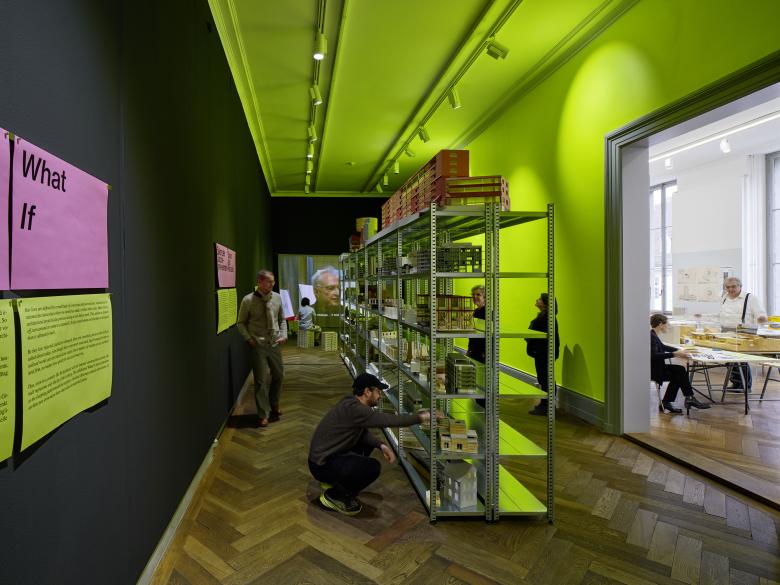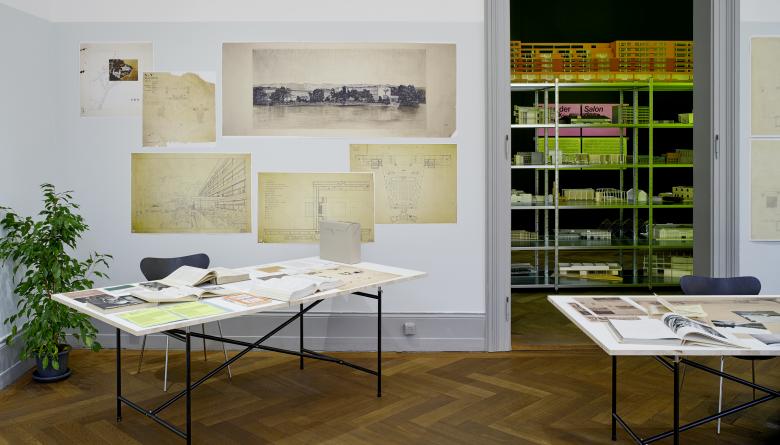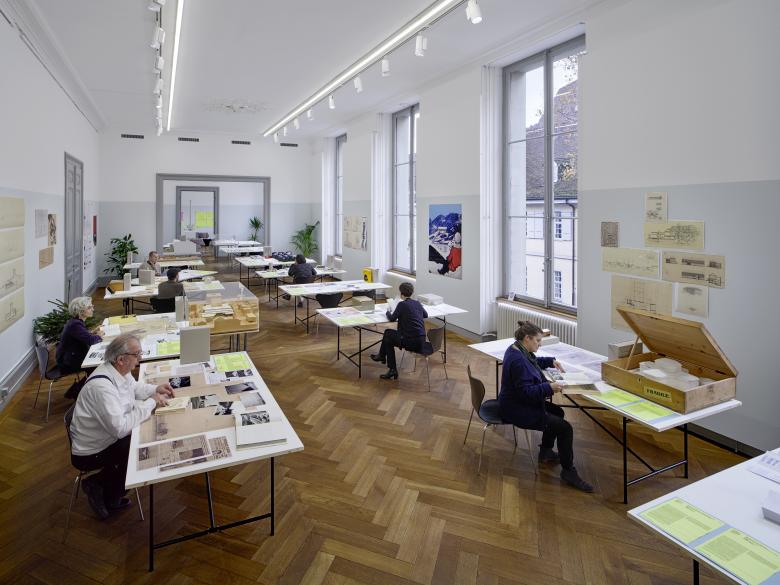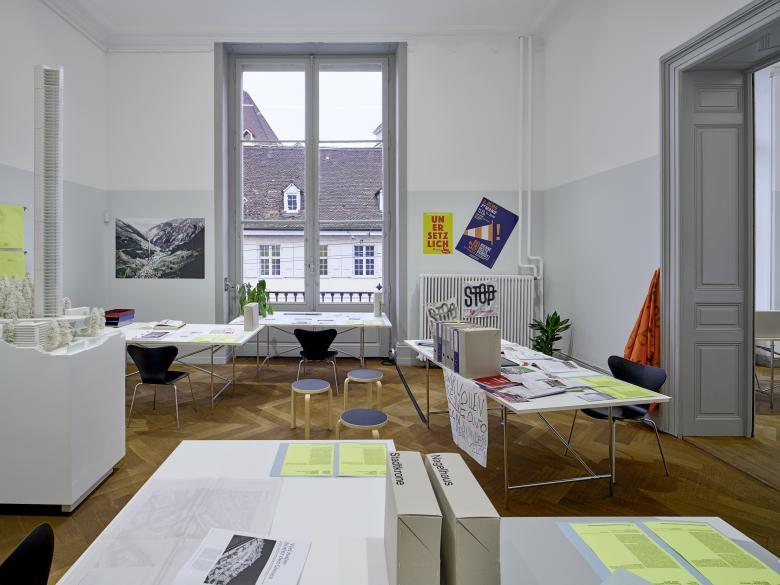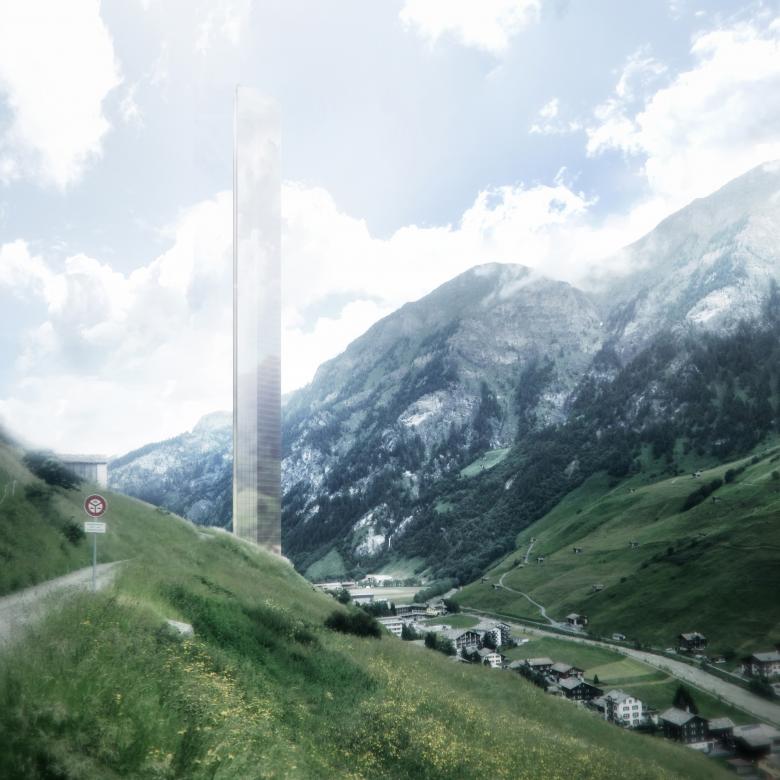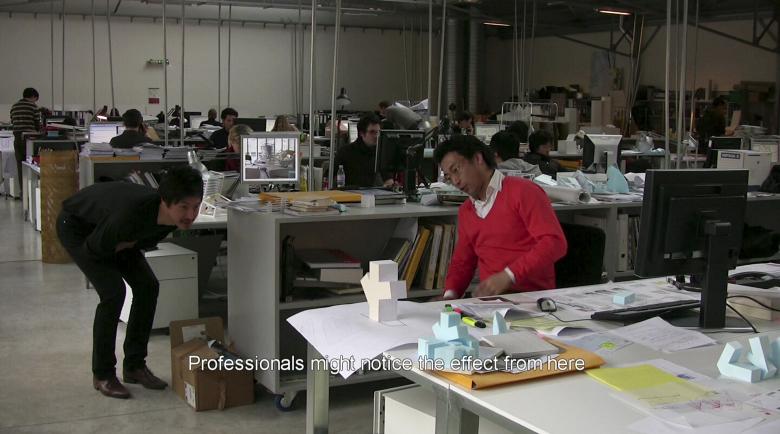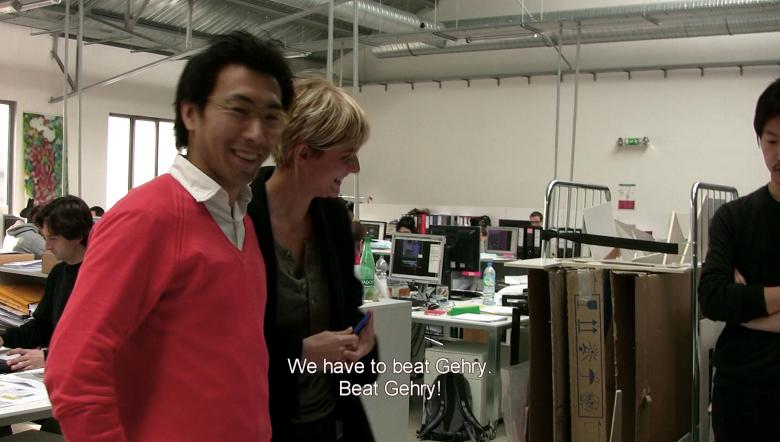18. December 2023
S AM exhibition view ‘What if’ (Photo © Tom Bisig)
Variations on our reality are currently on display at the S AM Swiss Architecture Museum in Basel. The curators of “What if” have given a stage to entries from architectural competitions that will never be realized. It is a look into the past that is sad, albeit briefly, but with positive connotations.
A lot of optimism and passion is required to take part in competitions. Whether in architecture, engineering, landscape architecture or other specialized disciplines, taking part in a competition comes with the expectation that you can win first prize with your own proposal. There is no other way to view it, otherwise you wouldn't invest the countless hours, have discussions with colleagues, develop models, and produce drawings, all done for one thing: the judging. At the opening of the "What if" exhibition, S AM director Andreas Ruby called this the “sword of Damocles of the judging body” and described it as that tragic moment “when, as an architect, you have to say goodbye to a vision that you yourself saw and still see as the best of all worlds.”
S AM exhibition view ‘What if’ (Photo © Tom Bisig)
An alternative Switzerland on displayThe exhibition at the S AM Swiss Architecture Museum is dedicated to the state of the “lost project.” It is not a sad show, per se. In the run-up to the exhibition, curator Andreas Kofler invited all Swiss architecture and planning offices to donate archived models of their lost competitions to the exhibition. On display in the museum, they stand lined up on one side of a long, high shelf. Although they represent the conclusions and aftermaths of their respective competitions, the models are being given a new life: In the coming weeks, the museum's educators will work with children to rebuild and continue building, changing and developing the elements and materials of the models, putting them together to create something new. The products of this work — this circular model building — will be collected over time on the other side of the shelf, exhibited as something new. At the front of the room, the 2013 documentary film "The Competition" by Angel Borrego Cubero runs on a loop, like a reminder of the processual nature of competitions.
S AM exhibition view ‘What if’ (Photo © Tom Bisig)
The manifold death of projectsThere are many reasons competition entries are not realized. In the second part of the exhibition, Kofler and Ruby sort the assembled projects into four categories: “Lost” is the classic losing of the competition; “Denied” stands for the Swiss peculiarity of the referendum; “Failed” are those projects that are ultimately never realized due to various hardships, ending up in drawers; and “Changed” collects the projects that were redesigned so much after the competition that they no longer resemble the winning design. For this collection and classification, Kofler and Ruby contacted various Swiss institutions and asked them about unrealized buildings in their region that are recurring themes and sources of controversy. Unbuilt does not mean “out of mind.” Rather, the variants show what our cities could look like.
S AM exhibition view ‘What if’ (Photo © Tom Bisig)
Please touch!Large tables full of drawings, models, and tools as well as numerous plans hung on the walls create the atmosphere of a classic architectural office next to the room with its shelves full of models. Each tables is dedicated to one lost competition from the 20th and 21st centuries in Switzerland. Sorted chronologically, you first encounter Le Corbusier's plans for the Palais des Nations in Geneva (1927-1929), followed by Jørn Utzon's Schauspielhaus in Zurich (1963-1973), Werner Stücheli's Waldstadt in Zurich (1971), and Mario Botta's extension of the Federal Palace of Switzerland (1991-1993). The most recent projects include the Wasserstadt Solothurn by Herzog & de Meuron (2006-2022), the Westast highway bypass in Biel (2014-2020), and the “Femme de Vals” tower by Morphosis (2014-2017). On each table, visitors will find artifacts that document the development and progress of the individual projects: planning documents, voting posters, newspaper reports, and other publications. The exhibition organizers invite visitors to touch and explore; they want to make the visitors part of the project and enable them to understand why those projects failed.
Morphosis: 7132 Hotel & Arrival, Vals, 2014-2017 (Visualization © Morphosis)
"An homage to the willingness of architects to make sacrifices"Failure also has positive connotations, which is why the curators refer to the unrealized projects as the “humus of the unbuilt”: They contain strong ideas that can in turn inspire other designers. At the same time, the economic aspect is interesting, as the exhibition gives a sense of how much the country is paying for the processes and how much unpaid, self-exploitative work is involved. According to Ruby, the exhibition is also a “tribute to the willingness of architects to make sacrifices, to motivate themselves again and again in every competition and to put all their heart and soul, all their optimism, all their hope into the scales, to put themselves in a state of collective euphoria, with which it is only possible to release this energy for weeks.”
Still from ‘The Competition’ (Photo © Angel Borrego Cubero)
Is it still worth taking part in competitions today?How far has this willingness to make sacrifices gone? A week after the opening of the exhibition in Basel, a laboratory was held in Zurich on the current state of the competition system. There it became clear that the effort involved in taking part in competitions today is extremely high and therefore frustrates building professionals. Architect Reto Gmür made his own calculations for the price of a two-stage competition with 20 and later four participating offices: It costs over 500,000 francs, compared with prize money just over a third of this amount if they win the competition. In a one-stage competition with five participants, the ratio of expenditure to remuneration is 7:1, while in the one-stage planner selection procedure with eight participants it is as much as 8:1. The examples show a clear imbalance, especially when considering all the non-award-winning entries. If the effort involved is too difficult to estimate or too high, fewer offices will take part in open competitions. The numbers are currently falling sharply, with just a handful of offices taking part in some open competitions.
Still from ‘The Competition’ (Photo © Angel Borrego Cubero)
New possibilities for the culture of competitionsEven before the competition laboratory, three planning groups had already looked at possible new ways of saving the competition system, which is valuable in terms of building culture, while at the same time reducing the burden on participating offices. The options that emerged were, firstly, simplifying the competition; secondly, increasing its digitalization; and, thirdly, redesigning competition tasks based on CO2 targets. The main tenor of the first, simplification, was the desire for the competition organizers and jury to tighten up the program and define their stance and wishes more clearly, instead of handing over vast amounts of accompanying documents and requiring each individual office to study them. In the case of competitions with increased digitalization, the awarding party would also have to be more involved than before. The third working group proposed a different approach to competitions in future, namely to focus on the number of future residents of a building, for example, in addition to the construction task and the amount of CO2 that may be used for the planned building. Initial attempts to hold such a competition are already underway.
“A second prize is not a ‘narrow miss,’ but a tragic loss,” an architect friend told me years ago. Several hundred competitions and study commissions are held every year in Germany, Switzerland, and Austria, with the weighting varying from country to country. To ensure that frustration doesn't gain the upper hand and that pleasure remains, participants need fair conditions and remuneration for their work. Because, as nice as it may be to look back on the competition system of the past in the exhibition, what is really helpful for today's planning process is to make the procedures more contemporary and thus open up new possibilities for the culture of competitions.
This article was originally published as “Der Wettbewerb: Früher, heute und morgen” on German-Architects. English translation edited by John Hill.
Related articles
-
Learning from Brussels
1 month ago
-
The Competition: Past, Present and Future
on 12/18/23
